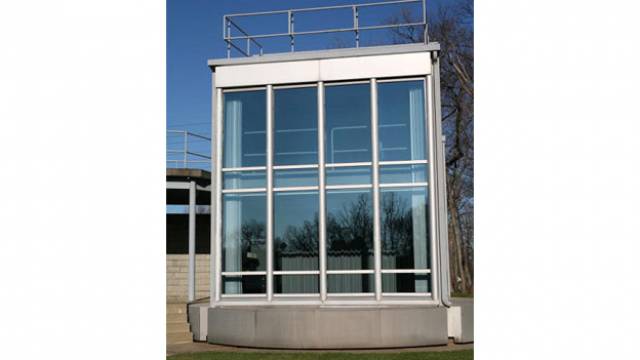At the upcoming 2013 American Institute of Architects (AIA) National Convention and Expo in Denver, 20-22 June, PPG will present its new glass catalogue, online education centre, and eView tool.
PPG Industries will introduce Solarban® 67 solar control, low-emissivity (low-E) glass and two online glass education and specification tools at the 2013 American Institute of Architects (AIA) National Convention and Expo in Denver, 20-22 June.
Featuring a soft, virtually imperceptible, neutral coating, Solarban 67 glass provides commercial buildings with a brilliantly clear appearance along with excellent solar control performance. Engineered with a proprietary double-silver, magnetron-sputtered vacuum deposition (MSVD) coating developed by PPG, Solarban 67 glass transmits and reflects the true tone and brightness of ambient light and colour. The crispness and clarity of Solarban 67 glass is further enhanced by its low interior and exterior reflectivity of 16 and 19%, respectively.
PPG also will debut two online education and specification tools for architects. The PPG Glass Education Center helps architects, specifiers, students and construction industry professionals learn more about designing, specifying and building with glass. The site is divided into three sections – Glass Topics, Glass FAQs and Glossary – and houses a mix of instructive video shorts, colourful illustrations and educational features addressing issues such as preventing thermal glass breakage, specifying large insulating glass units (IGUs) and how low-E glass works. Content is updated regularly based on frequently-asked questions fielded by PPG during trade shows and sales calls and through its website and call centre.
PPG Glass eView is a multifunctional collection of electronic tools to help architects and specifiers identify and visualize the PPG glass products that best fit their project needs. Using this Web-based programme, architects can build virtual double-glazed or triple-glazed IGUs customized for desired performance and aesthetic specifications, and then view them from a variety of angles in three dimensions to see their colour, thickness, light transmittance, interior reflectivity and exterior reflectivity in a variety of room and outdoor settings.




